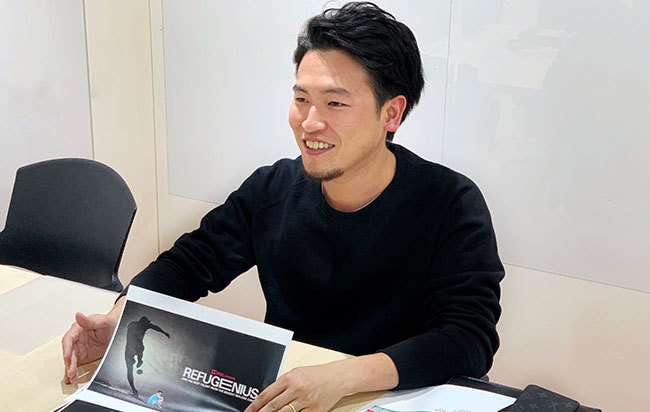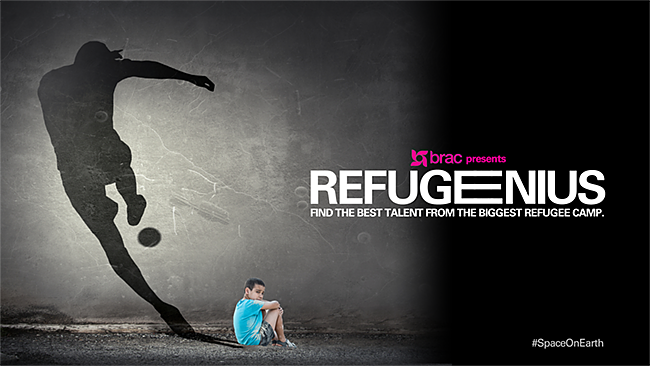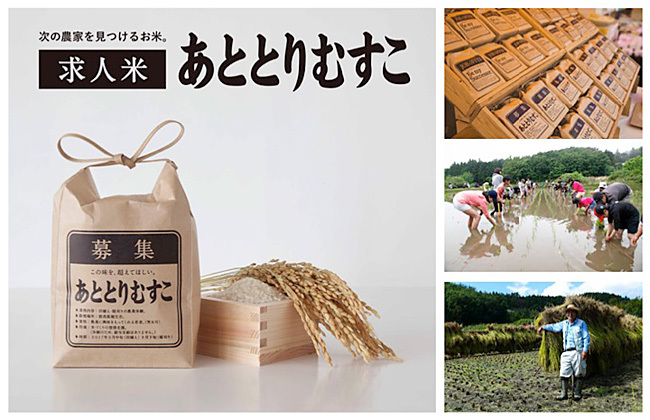Note: This website was automatically translated, so some terms or nuances may not be completely accurate.
Winner of the Young Spikes Gold Award. What is the planner's "fact-focused" thought process?

Nakagawa Ryo
Spikes Asia, held annually as Asia's largest advertising festival, features the Young Spikes Competition. This event, limited to participants under 30, sees teams of two representatives from each country compete by developing and presenting solutions to a local challenge within 24 hours. Competitions are held across categories like Digital and PR.
After advancing through the national qualifiers, which saw 172 teams participate this year, Dentsu Inc.'s Ryo Nakagawa (Creative Planning Division 5) represented Japan in the PR category. Teaming up with Kentaro Muraishi (Freelance), they won the Gold Award, the top prize, at the finals held in Singapore.

At the Young Spikes Competition Awards Ceremony
What challenges and struggles did you face from receiving the brief to completing the presentation? And now that you've overcome them to win Gold, what do you feel you've gained? We spoke with Mr. Nakagawa.

Ryo Nakagawa (Dentsu Inc., Creative Planning Division 5)
Over 15 attempts. Why he was so committed to the competition
──I understand you've challenged yourself in these advertising competitions multiple times over the eight years since joining the company. That must make this Gold win all the more rewarding.
I turned 30 this year, and I've entered the domestic qualifying round for the so-called "Young Cannes," the Young Lions Competition, at least 15 times. It's an open competition where you can enter multiple categories, not just for creative roles but from various job types. But I kept failing. It felt like I was entering just to get discouraged every time (laughs).
Even before joining the company, I always aspired to work in creative roles. But I was assigned to the Promotion Department for my first five years, then spent two years in the Sales Department (now the Business Production Department). Last year, there was an internal transfer exam, and I finally passed it. Last fall, I moved into my current creative role.
Even though I aspired to be creative, the longer I worked at the company, the more skeptical I became about myself. That's the background behind why I kept challenging myself in the competition. I think I wanted to confirm for myself whether I could really succeed in this field. Actually, this year too, I entered not just the PR division, but also the Film Division, Print Division, and Media Division – four divisions in total. As usual, I failed to get into all of them except PR (cry).
Last year, I made it to the finalists in the Young Cannes domestic qualifiers for the first time. From there, I was selected as the Japanese representative and put in a tremendous effort. But I lost on the ground. After that, I was so frustrated I cried my eyes out in front of the venue. Even days later, I couldn't shake the feeling, and for the first time in my life, I shaved my head. Looking back now, I was probably too tense (laughs).
A year later, I decided to challenge again this year, teaming up with freelance creative Kentaro Muraishi to enter starting from the national qualifiers.
──And that's how you were selected as Japan's representative for the Young Spikes PR category(※). What kind of challenge did they present locally this time?
The challenge was to propose ways to continuously raise awareness and secure donations for support activities targeting Rohingya refugee children—often called the "world's largest refugee camp." The client was BRAC, an NPO supporting refugees. This time, Ogilvy, an advertising agency, handled the brief. They had already run a campaign with BRAC called "#SpaceOnEarth." The brief was to develop a second phase for that. There was also a very specific request: "We want a social-driven initiative like the Ice Bucket Challenge that everyone can participate in."
*Young Spikes PR Category: Teams compete in the Young Cannes domestic qualifiers to be selected as Japan's representative for the Young Spikes finals held in Singapore.
When developing the concept, how strong a fact can we uncover?
──What kind of project did you propose for the challenge?
First, we decided to redefine the concept of "the world's largest refugee camp." It's said there are 500,000 Rohingya children. So, we proposed redefining the Rohingya as "a place where 500,000 talents lie dormant." We named this concept "REFUGEENIUS," combining "GENIUS in REFUGEE," and proposed a campaign to seek out and support the greatest talents from within the world's largest refugee camp.

Courtesy of Spikes Asia 2018
My seniors taught me that facts are crucial in PR. So, when I plan PR campaigns, I start by finding facts. I look for facts that make people sit up and take notice, then build engaging stories around them to draw people in. This time, research revealed a fact: "Many superstars actually come from refugee backgrounds." Examples include Luka Modrić, the 2018 FIFA Best Player and Croatian national team soccer player; singer Rita Ora; and, going further back, Freddie Mercury. This led me to conceive a "Social Audition Campaign" to discover the next generation of talent among Rohingya refugee children, alongside these famous refugees.
──How did you approach the "socially driven element" that was needed?
We appointed famous refugees as "scouts." First, they share videos of the children's amazing plays or singing voices on social media. By encouraging everyone to share these posts, we enable support for new talent. We produce and sell merchandise like jerseys or CDs featuring popular children. The proceeds go toward supporting the entire refugee camp. Furthermore, every time a REFUGEENIUS who became famous through this project performs, their story as someone discovered by this initiative would be shared. We believed this would create a framework for sustained recognition and ongoing donations.
Some might view refugees as objects of pity, but through this project, we aim to shift that perspective—turning "support" into "cheering them on."
──What were the key points in developing the concept?
We just kept testing and testing. My partner, Muraishi-kun, and I did it to the point of exhaustion. It wasn't that we didn't believe in ourselves, but we became almost mean to each other, saying things like, "This won't move people," or "What's the one-line pitch for this?" Actually, before "REFUGEENIUS," we had another project idea. It was called "SPACE OUT," which means "to zone out" in Japanese. Since people in refugee camps can't relax at home, we planned to film videos of friends zoning out to surprise them and spread it. We initially thought of a social media-focused project similar to the Ice Bucket Challenge, which was emphasized during the orientation. It could also work as a second installment of the already existing "#SpaceOnEarth" campaign. But I thought, "I don't know if this project can win," and after persistent effort, "REFUGEENIUS" was born.
──What made you doubt it could win?
While "SPACE OUT" aligned with the brief in being social-driven and fitting as a second installment, it risked eliciting negative reactions from judges. Videos of startling daydreamers might be fun to watch, but being startled isn't pleasant for the person involved. Honestly, I hate being startled myself (laughs). Even if the video's humor got it shared, I felt it ultimately wouldn't convey the core issues facing refugees.
So we decided to revisit the brief with a fresh perspective: creating a project that makes people want to learn more about Rohingya refugees and want to support them.
Young Cannes and Young Spikes are somewhat unique competitions where you race to create "ivory tower theories" in a short time. But the thought process—first finding facts, then building a story around them, and planning how to unfold it across events, film, and web—is something I consciously apply in my regular work now.
──This year, Mr.Nakagawa won the TCC (Tokyo Copywriters Club) Newcomer Award for"Job-Seeking Rice: The Heir Son"( http://www.atotorimusuko.com/ ),which transformed rice itself into a job advertisement. Was this a similar process?
Yes, it was. The product is delicious rice from Kiryu City, Gunma Prefecture. Originally, it was just a request for package design, but during our discussions, the issue of no successor came up. Further research revealed that "the average age of Japanese farmers is 67, and farmers under 29 make up less than 3%" – a problem facing the entire country. Since a farmer's best advertisement is the delicious crops they produce, we created a system where the rice itself becomes the job advertisement, and purchasers can participate in agricultural experiences.

The Importance of "Facts" Learned from the Young Competition
──As the boundaries between PR and creative work are predicted to blur, the "fact-driven thought process" clarified through the competition may prove crucial.
Through participating in the national preliminaries each year, I learned from senior PR professionals that "PR is about building consensus." What becomes crucial then is, indeed, facts. Writing "facts" might sound a bit grand, but for a company, it means "what has been done and is being done"; for society, "what has happened and is happening." I now start by researching the origins of any new client or product I'm assigned.
When people hear "PR," they often think of exposure metrics—how much media coverage was generated. But I believe PR is fundamentally about "considering how the world will receive it." Therefore, I don't think the line between PR and advertising is that distinct.
I want to keep working hard to apply what I've learned from this experience to my work.
Was this article helpful?
Newsletter registration is here
We select and publish important news every day
For inquiries about this article
Author

Nakagawa Ryo
Spent childhood in Egypt and Germany. Studied photojournalism in India before joining Dentsu Inc. Moved through the Promotion Bureau and Sales Bureau (now Business Production Bureau) to the Creative Bureau. Plans and produces projects from a PR perspective. Selected as Japan's Young PR Representative for two consecutive years in 2017 and 2018. Awards include: - Young Spikes 2018 PR Category Japan Representative / Grand Prix - Young Cannes 2017 PR Category Japan Representative - TCC Newcomer Award - CCN Award - Good Design Award - Spikes Asia Silver & Bronze - ADFEST Silver Left Dentsu Inc. in May 2023.